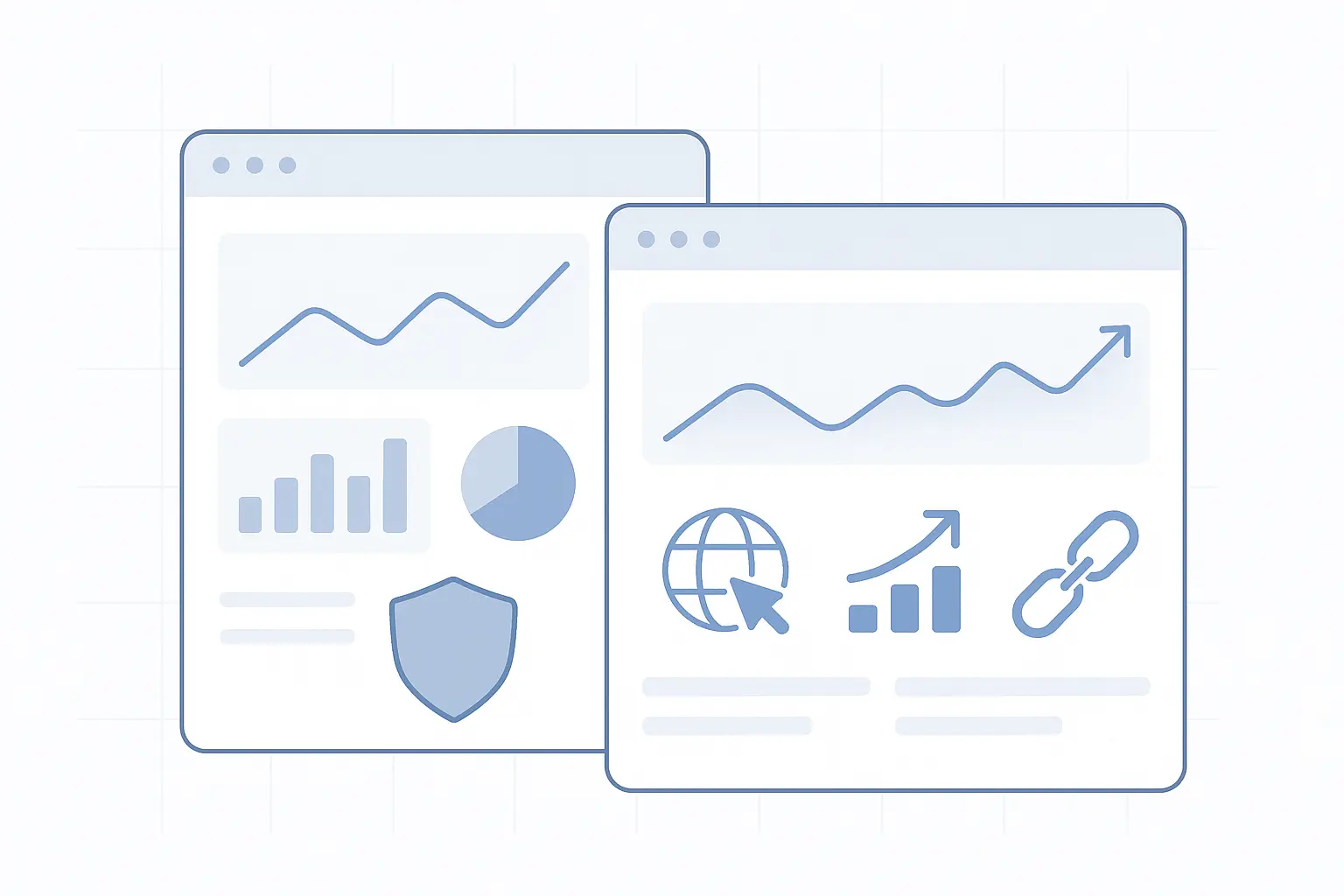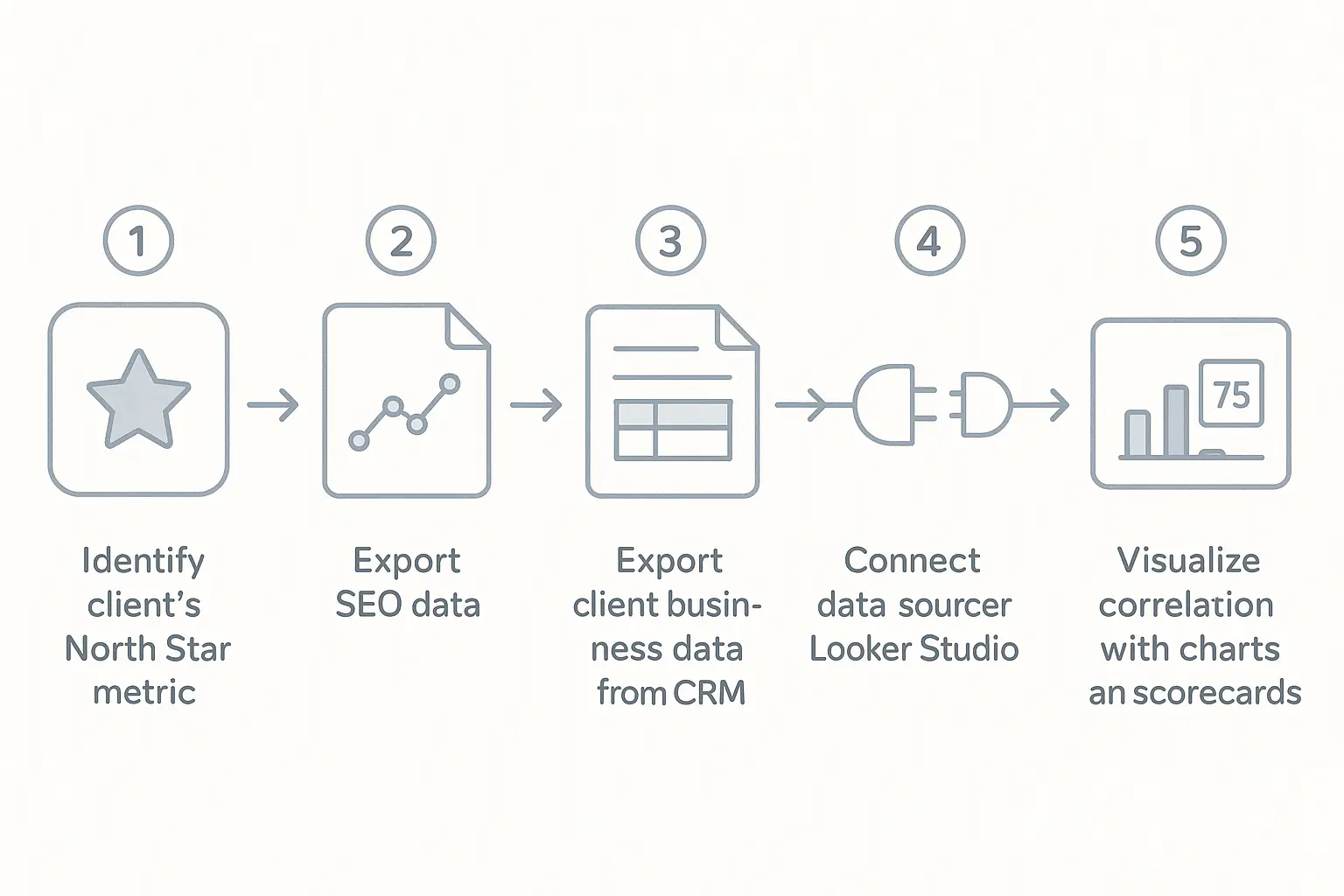You’re on a roll. Your agency is growing, you’ve onboarded a fantastic white-label SEO partner to handle fulfillment, and the standardized monthly reports look clean and professional. Everything is efficient. Scalable. Profitable.
Then, an email from your most important client lands in your inbox.
“This is great, but can you show me how the traffic increase from the blog is impacting demo sign-ups in HubSpot? Also, our sales team wants to see if rankings for ‘enterprise solutions’ are driving MQLs.”
Your stomach sinks. The request is perfectly reasonable, but it goes beyond the scope of the standardized reports your partner provides. Suddenly, the efficiency that made outsourcing so attractive feels like a limitation.
This is a classic dilemma, and if you’ve faced it, you’re not alone. The real challenge is bridging the gap between your partner’s scalable reporting and your client’s need for bespoke business insights.
The good news? The solution doesn’t require disrupting your workflow or demanding impossible customizations. It’s about redefining your role from a mere reseller to a strategic data storyteller.
The Two Sides of the Reporting Coin
To solve this problem, we first have to understand why it exists. Your agency and your client both have valid, yet seemingly conflicting, needs when it comes to reporting.
Why Your Partner (and Your Agency) Need Standardization
Efficiency is paramount in the agency world. In fact, a staggering 75% of agencies report that client reporting is their most time-consuming non-billable task.
White-label SEO partners solve this by creating standardized reporting templates. This allows them to:
- Scale Execution: Deliver consistent, high-quality data across dozens or hundreds of clients without reinventing the wheel each month.
- Ensure Accuracy: Automated, templated reports reduce the risk of human error.
- Focus on What Matters: They can dedicate their resources to the actual SEO work—audits, content briefs, and link building—that drives results.
Think of the standardized report as the raw, high-quality ingredients delivered to your kitchen. It’s packed with essential data: keyword rankings, organic traffic, backlink acquisition, and technical health scores. It’s the foundational “what” of your SEO campaign.
Why Your Client Needs Customization
Your client, on the other hand, isn’t just buying SEO; they’re investing in business growth. Their biggest concern is return on investment. Research shows that only 30% of small businesses are happy with the ROI from their current SEO strategy, often because they can’t connect SEO metrics to bottom-line results.
They aren’t asking for custom data to be difficult. They’re asking because they need to answer critical business questions:
- “Is our investment in SEO actually making the phone ring?”
- “Which blog topics are generating qualified leads, not just traffic?”
- “How does our organic performance support our new product launch?”
They need the “so what?” behind the data. And that’s where your agency has a massive opportunity to shine.
The Hybrid Approach: Your Data, Their Story
The most successful agencies using white-label SEO services don’t just forward reports. They absorb their partner’s data and enrich it with their own insights, creating a powerful narrative that speaks directly to the client’s business goals.

Instead of seeing the standardized report as the final product, view it as the first step in your value chain. Your job is to add the strategic layer that no one else can.
Here’s a simple framework to make this happen without overhauling your entire process.
Step 1: Start with the Standardized Foundation
Begin with the report from your partner. This is your source of truth for all core SEO KPIs. It tells you what’s happening on the search engine results pages (SERPs) and on the website.
Step 2: Identify Your “Value-Add” Data Source
Next, look inside your own (or your client’s) tech stack. That’s where the business-critical data lives. The specific source will depend on the client’s goals, but common examples include:
- CRM Data: Leads, MQLs, SQLs, and closed-won deals (from HubSpot, Salesforce, etc.).
- Call Tracking Software: Inbound calls attributed to organic traffic (from CallRail, WhatConverts, etc.).
- E-commerce Platforms: Revenue, transactions, and average order value from organic search (from Shopify, BigCommerce, etc.).
- Paid Media Dashboards: Data on how organic and paid search are working together (from Google Ads).
Step 3: Connect the Dots (No Complex BI Team Needed)
Now, it’s time to bring the two datasets together to tell a story. You don’t need a complicated business intelligence platform for this; a simple dashboarding tool or even a well-organized spreadsheet can work wonders.
A tool like Google Looker Studio is perfect for this. You can pull in your partner’s SEO data (often via a Google Sheet export) and connect a second data source, like a Google Analytics goal report or a CRM export.
A study by Dentsu Aegis Network found that integrating data from at least three sources can boost campaign effectiveness by over 35%. You’re not just making a prettier report; you’re creating a smarter strategy.
By blending these sources, you can move from a simple observation to a powerful insight.
- Before (Standard Report): “Organic traffic to the services page increased by 30%.”
- After (Hybrid Report): “Our SEO strategy drove a 30% increase in traffic to the services page, which generated a 22% lift in demo requests from that page, according to HubSpot.”
Let’s Walk Through a Scenario
Imagine you’re a digital marketing agency working with a local roofing contractor. Your SEO outsourcing partner delivers a monthly report showing a #3 ranking for “emergency roof repair [city name]” and a 50% increase in organic traffic to the emergency services page.

That’s great, but your client asks, “Are we actually getting more emergency calls from this?”
Here’s your approach:
- Acknowledge the SEO Win: Start with the data from your partner’s report.
- Pull Your Value-Add Data: Log into the call tracking software you manage for the client and filter for calls originating from organic search.
- Connect the Two: Create a simple chart in a slide deck or dashboard showing the traffic trend line from the SEO report next to the call volume trend line.
- Craft the Narrative: Your new reporting insight becomes: “The SEO campaign successfully captured a top-3 ranking for our main emergency keyword. This directly led to a 50% increase in organic traffic to the page and, more importantly, generated 15 qualified phone leads last month—a 40% increase from the month prior.”
Suddenly, you’re not talking about rankings anymore. You’re talking about revenue. And that’s a conversation that proves your agency’s indispensable value.
Why This Approach Cements Your Agency’s Role
Adopting this hybrid reporting model does more than just satisfy a single client request; it fundamentally strengthens your business.
- You Maintain Peak Efficiency: Your fulfillment partner continues to operate at scale, and your internal team isn’t bogged down with custom data pulls for every single metric.
- You Elevate Your Strategic Value: You become the indispensable interpreter connecting SEO activities to business outcomes, solidifying your role as a true strategic partner.
- You Dramatically Improve Client Retention: The proof is in the numbers. Agencies that can clearly demonstrate ROI see up to a 45% higher client retention rate. When clients see exactly how your work impacts their bottom line, they have every reason to stick with you.
The fear that a white-label partner will commoditize your service is valid only if you act like a commodity. By layering your strategic insights on top of their scalable execution, you create a service offering that is both efficient and deeply valuable.
Frequently Asked Questions
What if I don’t use a fancy dashboarding tool?
You don’t need one to start. A simple PowerPoint or Google Slides presentation with screenshots from two different platforms placed side-by-side can be incredibly effective. The power is in the narrative you build, not the complexity of the tool.
How often should I provide this level of custom insight?
While core SEO reports should be monthly, these deeper, blended insights are perfect for Quarterly Business Reviews (QBRs). This cadence gives you enough data to establish meaningful trends and reinforces your role as a high-level strategic advisor.
My white-label partner is great, but they can’t access my client’s CRM. Is that a problem?
No, that’s actually by design. It maintains a clear and secure separation of duties. Your partner’s job is to influence search rankings and traffic. Your job is to connect that traffic to your client’s business goals using the data you control. This model puts you firmly in the driver’s seat of the client relationship.
What’s the easiest way to start?
Pick one key client who has a clear business metric they care about (e.g., leads, sales, sign-ups). Then, identify one SEO metric from your partner’s report that should logically influence it (e.g., traffic to a key page). Track just those two metrics together for a month or two. The story will begin to write itself.
Your Partner Is the Engine, You Are the Driver
Ultimately, a standardized report from an agency SEO partner isn’t a restrictive box; it’s a solid foundation. It’s the essential, reliable data that frees you up to do what your clients really hire you for: providing strategic guidance that grows their business.

By embracing your role as a data storyteller, you can turn a challenging client request into your most powerful tool for demonstrating value, building trust, and proving your agency is the critical link between a client’s SEO investment and their real-world success.

